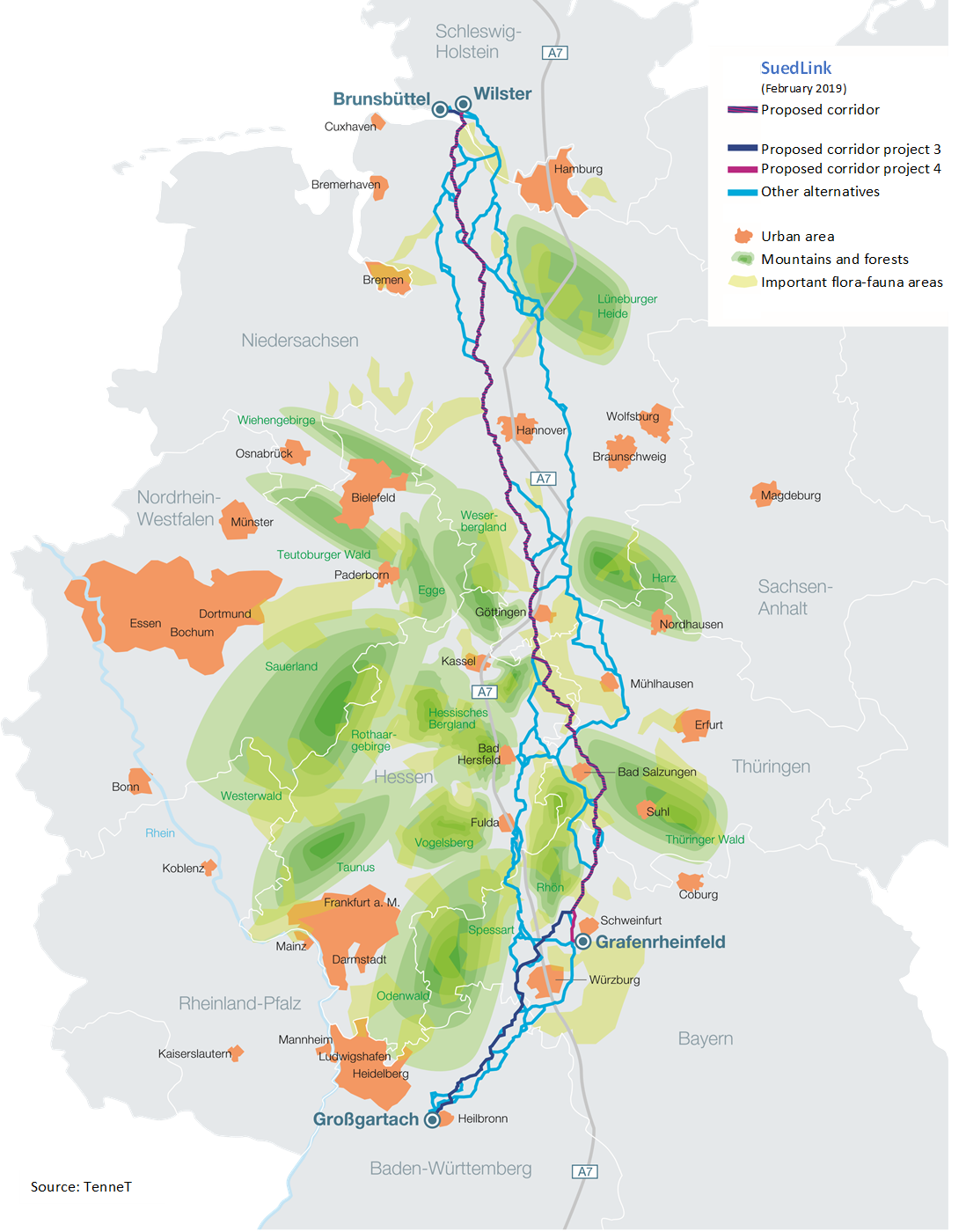New north-south electricity highway takes shape
Clean Energy Wire
Grid operators TenneT and TransnetBW have presented their detailed plans for the route of Germany’s large north-south electricity line “SuedLink”, running from windy Schleswig-Holstein down to power-hungry Bavaria and Baden-Württemberg. The 700 km connection will consist of two HVDC (high voltage direct current) power cables. TenneT and TransnetBW say the investment volume for the new connection will be around 10 billion euros. Each line will have a capacity of two gigawatts. The proposed route will be publicly consulted as of March 2019 and a final decision by the Federal Network Agency is due to be taken by the end of the year. In a best-case scenario without long delays, the grid operators want to complete the line by 2025. People and communities affected by the new connections are arguing that a more local supply with renewable power would make large scale grid solutions redundant. Local opposition and legal challenges could therefore delay the project.
But a majority of experts and the government believe that the new lines are necessary as part of Germany’s new energy system which is to be largely based on renewables. By 2022, nuclear plants near the industrial centres in the south of the country will go offline while an increasing amount of electricity is generated by wind turbines in the north. In order to increase public acceptance and the speed of building the new lines, the federal government decided in 2015 to give priority to underground cables instead of (less costly) overland lines. The energy ministry wants to introduce a new law to further accelerate grid planning procedures this year.


